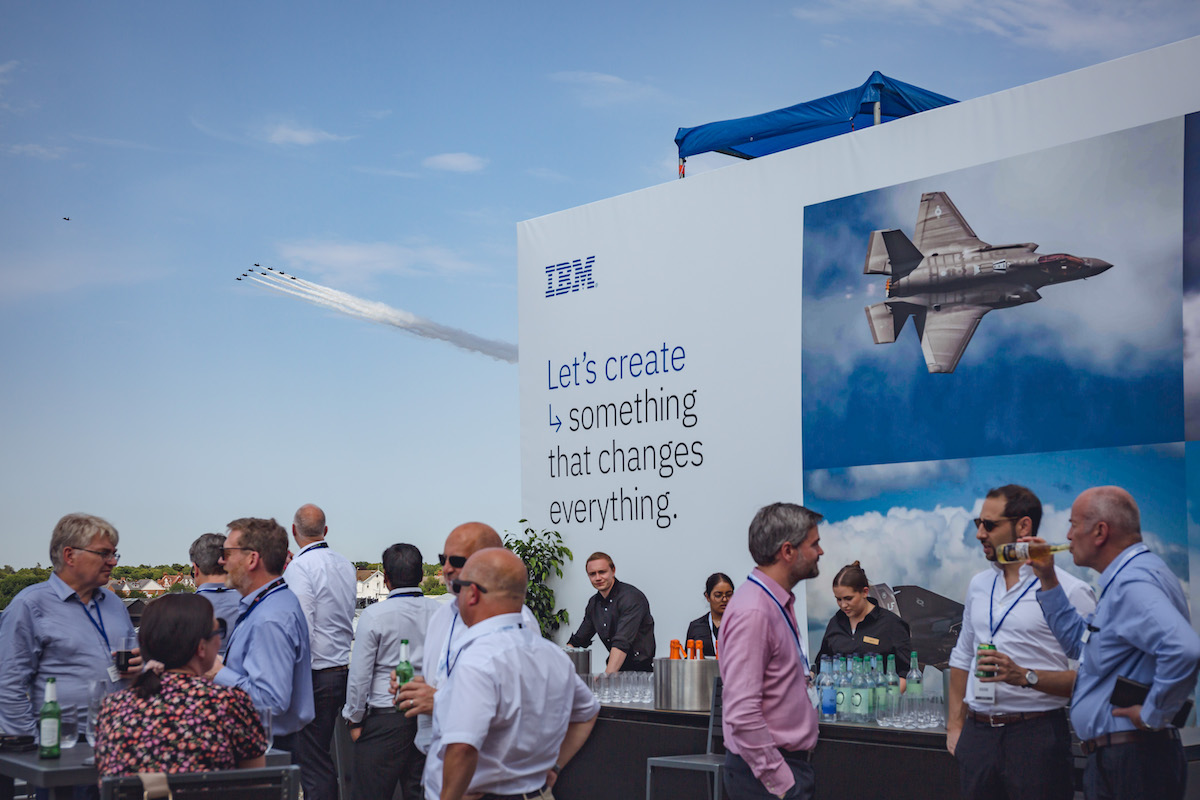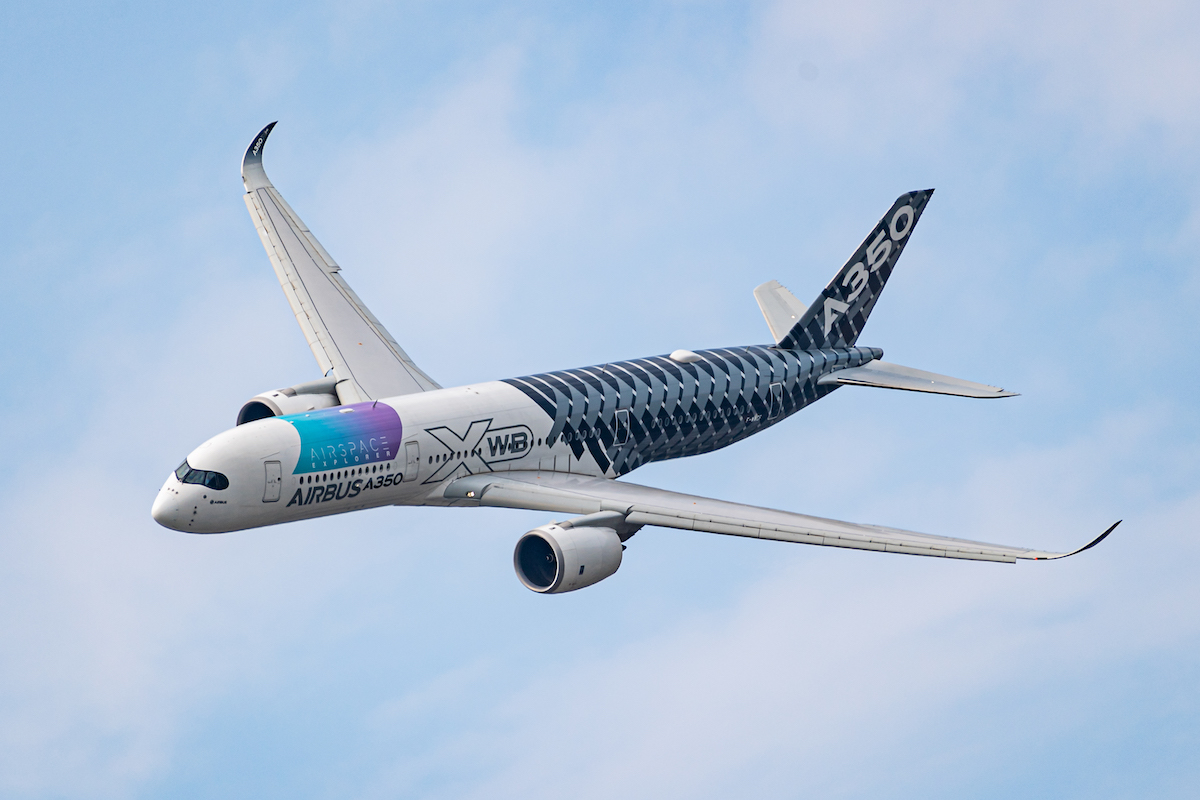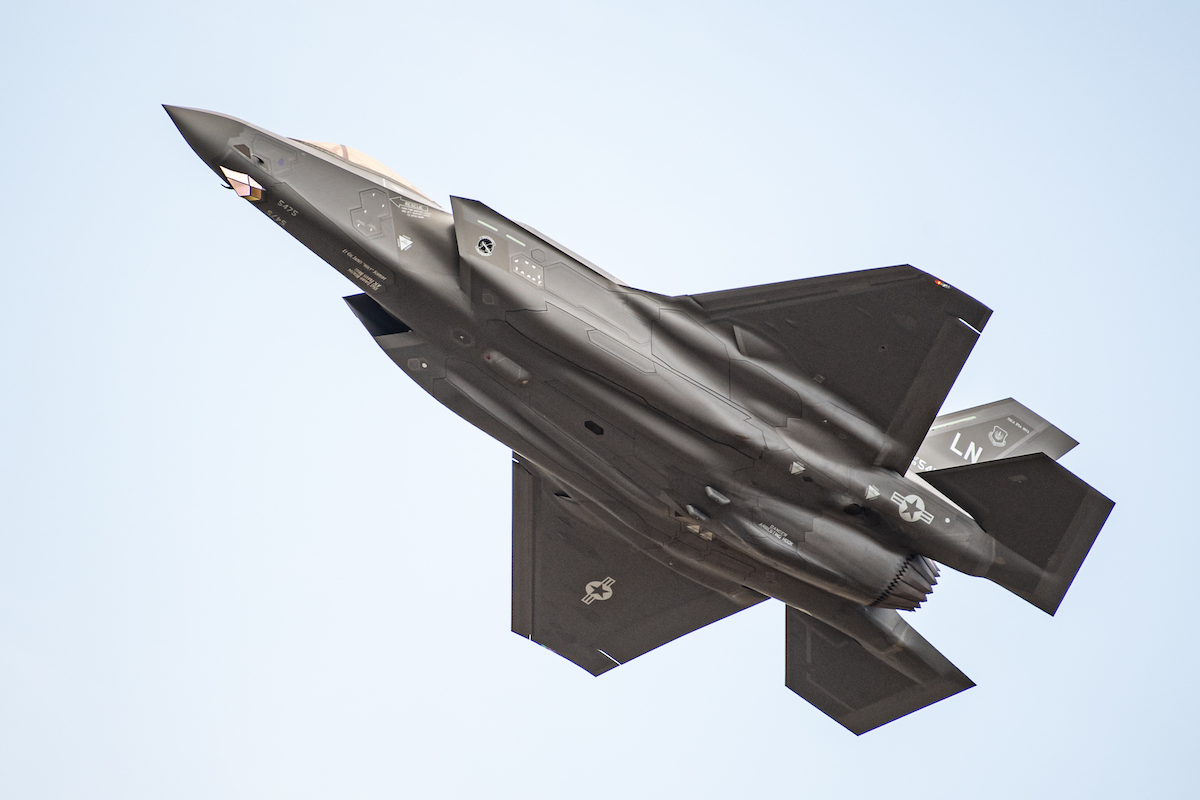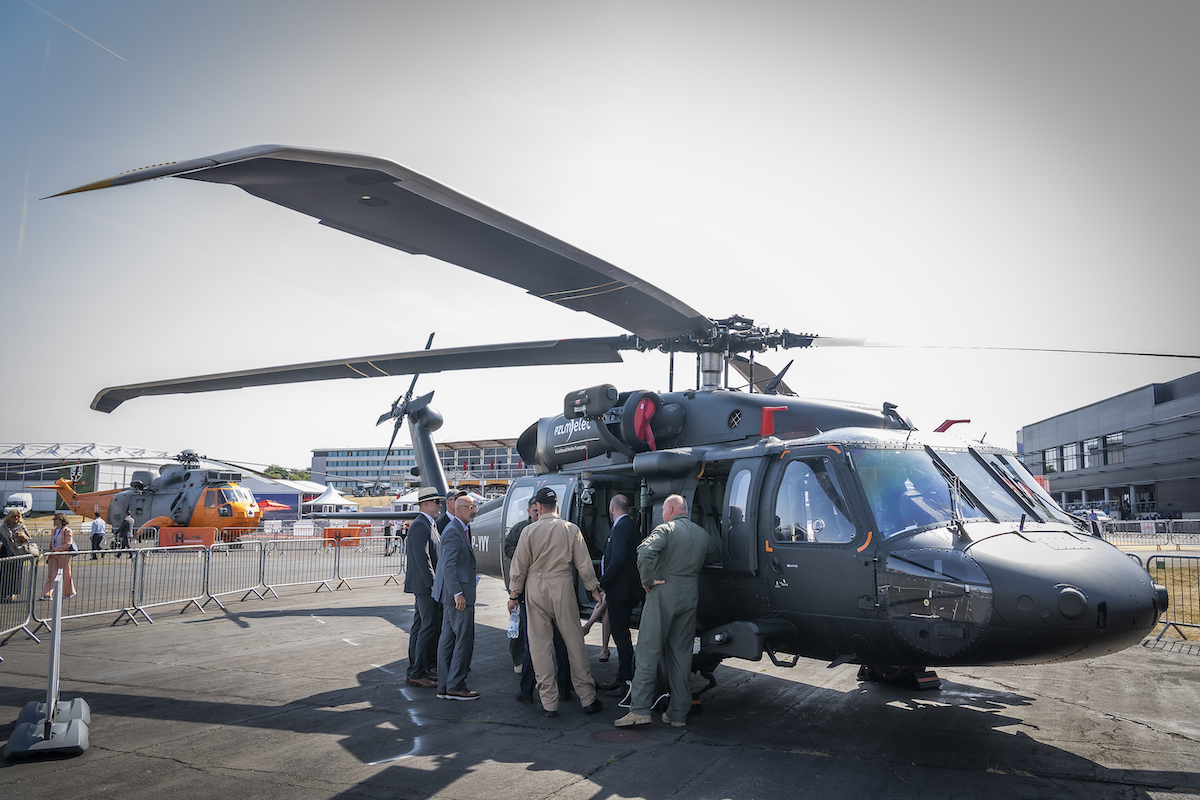This website uses cookies so that we can provide you with the best user experience possible. Cookie information is stored in your browser and performs functions such as recognising you when you return to our website and helping our team to understand which sections of the website you find most interesting and useful.
Flying high at Farnborough International Airshow
By Gabriel Power | 30 August 2022 | Travel
As the famed trade show makes its long-awaited return, Tempus takes a look inside the most technologically advanced creations in civil and military aviation

When it comes to aviation, ‘business’ is a difficult concept to define at the best of times. But, on the tarmac at Farnborough Airport during the venue’s first edition of its famed Farnborough International Airshow to have been held in four years, it took on an even more unusual veneer.
UK thermometers had just topped 40 ̊C for the first time in recorded history, and I stood alongside besuited businesspeople from across the globe, peering up into the sun to catch a glimpse of a brand new, 400+ seater jet aircraft doing aerobatic manoeuvres it would never repeat while in service. Among the crowd, I heard hushed snippets of excited gossip: “Boeing have just signed a contract with…”, “Qatar Airways are thinking of expanding their fleet…”. Suddenly, a piercing howl punctuated proceedings as a pair of F-35s whipped past, afterburners glowing and, at the same moment, I was offered a top-up for my glass of champagne. If this is how business is done in aviation, count me in.

The Airshow is a biennial behemoth of a showcase of the latest in aviation, be it civilian, cargo, executive or military. With the 2020 edition skipped due to Covid-19, there was an electric atmosphere among the crowds, with Boeing, Airbus and Embraer all due to show off their shiny new creations alongside a slew of military aircraft from around the world. Alongside several similar global expos, Farnborough is a window into the industry’s inner machinations, offering macroeconomic context and cementing the coming trends in technology and sustainability. It’s also a chance for airlines, manufacturers and enthusiasts to come together in celebration of all things aviation.
Trends in the aerospace sector tend to last a considerably longer time than other industries. Rather than talking about yearly or biannual trends, we would more talk about decade-wide trends, looking to 2030 or even 2040. At present, fuel efficiency and sustainability are the hot topics; this could be seen in all three of the main civil aircraft projects on display.

Boeing wowed the crowd with a rather flamboyant demonstration of its new 777-9, now officially the longest commercial aircraft ever built, seating a staggering 426 passengers. With two enormous GE9X engines built exclusively for this aircraft by General Electric, it consumes a remarkable 12 percent less fuel than similar twin-engine competitors, with 10 percent lower operating costs.
Airbus, meanwhile, remains focused on range. The European giant brought out a new variant of its A350-900, dubbed the “Airspace Explorer” and featuring a “cross-programme flight test platform for demonstrating new innovations which could be featured in the future in all Airspace cabins”, as the manufacturer puts it. While non-Explorer variants of this model have been in service since 2015, they bolster Airbus’s claim to the throne of fuel-efficient and thus long-distance flight; the A350-900ULR (Ultra- Long-Range) model has a firm hold on the record for the longest-range passenger aircraft ever built at just short of 10,000 miles — enough to fly Singapore to New York City direct.

Shortly after the A350 on display here had jetted back off to Airbus’ headquarters in Toulouse, Brazilian manufacturer Embraer rolled out arguably the most impressive creation of the show: the E190-E2, a narrow-body jet that actually failed to turn heads when it rocketed skyward, as it is so uniquely quiet. Noise pollution remains one of the most frequent complaints that communities level against commercial aviation and, with governing bodies incrementally lowering the volume threshold for jet aircraft, Embraer installed geared turbofan engines, allowing the turbine blades to spin significantly slower, lowering the noise footprint and, once again, increasing fuel efficiency.
From here, it’s all military aircraft. A Turkish military helicopter zips around defying gravity here, a handful of South Korean fighters zoom past there. And, behind the scenes, pulling all the strings on this spectacular day, is Farnborough Airport CEO, Simon Geere.

“After four years, the sense of occasion was fantastic, and it’s great for the airport and the town of Farnborough to have it back,” he said. “It gave me a feel for the breadth of the industry this time — I think it reminded us how important the aviation industry is to not just the region, but the whole of the UK in terms of jobs and the economy.
“It was fascinating to see the advancements in fuel efficiency, and it was amazing how quiet some of the aircraft were; it’s so important that aircraft become more environmentally and aurally friendly as we look to draw the community back into the aerospace sector as part of the UK’s pandemic recovery. This applies to commercial and executive travel.”
Geere’s takeaways on what the show demonstrated about industry trends were full of optimism. “It showed us that there is a strong resurgence in the aerospace sector, for sure, and we heard from a lot of keynote speakers about how the industry will be a key avenue of support for the UK economy going forward.
“For [Farnborough] in particular; we’re the largest business aviation airport in the UK and the fourth-largest in Europe and we are a key entry point to London and the southeast of England. We have a key role to play in supporting business aviation and travel.”

The airport is undergoing a significant overhaul in the name of sustainability, and Geere’s Roadmap to Net Zero by 2030 scheme is effectively leaving no stone unturned around the airport, from replacing hanger heating systems, to switching from diesel to waste oil forgroundvehicles.
“It’s all part of our desire to lead the crowd and be a global showcase for airport sustainability,” he says. “We were the first business aviation airport to become carbon neutral in 2018, and this is part of our ongoing drive to lead from an environmental perspective, and to be net zero by 2030 — or sooner.”
If the Airshow is anything to go by, and if enough industry participants follow Farnborough Airport’s lead, the future of aviation will likely be one in which passengers — both private and commercial — can rest assured that nearly every element of their journey is as environmentally conscious as possible, from the shuttle bus to the car park to the auxiliary ground power units that keep the planes running at the gate. It might just give us all a bit more peace of mind as we take to the skies.








